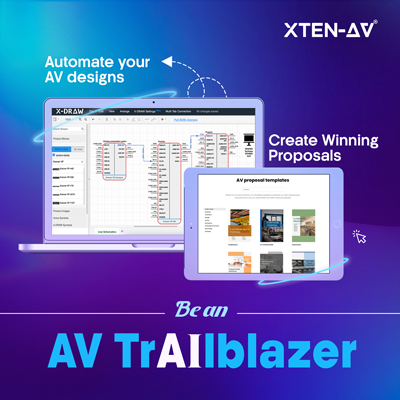Digital Signage: Revolutionizing Communication in the Modern World
In an age ruled by our yearning for knowledge and our obsession with the newest gadgets, digital signage shines as a groundbreaking phenomenon that refashioned the way enterprises communicate to their target audience. This dynamic new avenue of visual marketing allows businesses to take advantage of the opportunities offered by interactive, large-screen digital displays to convey their messages to their target audience, exhibit their products, and communicate with their customers in real time. If your main goal is to enhance the customer journey, stimulate brand visibility, or streamline internal information, learning the material and applying digital signage to your business plan can transform the way you do business.
What is Digital Signage?
Digital signage involves using modern display technologies to turn static signs into vibrant ones. This includes LED walls and LCD monitors, interactive projection equipment, and so much more. In fact, the way it works is digital content such as interesting websites, eye-catching videos, easy-to-digest instructions, a tempting restaurant menu, a convincing marketing message, or stunning digital Images.
The versatility of digital signage solutions allows them to be adjusted to perform a variety of functions in all spaces. Public spaces, cultural recommendations in museums, sports arenas, churches, academic buildings, shopping centers, the hospitality sector, and corporate environments all benefit from better accessibility, fun and engaging messages, unconventional digital ad options due to interactive screens, and OOH advertising panels. Thus, the union of technology and our living space creates an extra dimension and new channels of communication, bridging the reality around us in a more interactive and informed way.
What is a Digital Signage System?
A digital signage system is like a high-tech orchestra, where both the instruments (hardware) and the music (software) come together to captivate an audience.
The software acts like a brain, seamlessly processing data and displaying it on the digital screen. Here are some key features:
Content Management System (CMS): A user-friendly dashboard for digital signage, the CMS allows users to manage their display content efficiently. You can schedule when content appears, manage screens remotely, support different media formats (JPG, MP4, GIF, HTML, HTTPS), integrate with other systems, effortlessly create custom layouts, and ensure content looks great on any device.
Cloud-based content management: The digital signage CMS can either be hosted in an organization’s private data center (for on-premise digital signage) or on the cloud. Cloud hosting offers easier management of server infrastructure, straightforward content distribution across different locations, and high scalability. With your digital signage software on the cloud, you can access your dashboard or CMS from anywhere in the world.
Digital Signage Hardware
The components of digital signage include:
- Display screen: Much like your smartphone or television, this screen is where the magic happens, showcasing information in vivid clarity. Commercial display screens, known for their durability and exceptional display quality, are the top choice. Touchscreen displays are also popular as they add to the dynamism of digital signage. They allow audiences to interact with the displayed content, choosing what to see or learn about through touch. This level of interaction is particularly beneficial in settings such as educational institutions, museums, and retail digital signage, making information exploration a more personal and engaging endeavor.
- Signage player: This piece of kit connects to the screen, bringing content to life. Often found integrated into smart TVs, it employs software to fetch content from a central management system, displaying it in various formats such as videos, images, and HTML.
- Mounting hardware: A selection of brackets and cables that ensure the screen is securely attached to walls or gracefully suspended from ceilings.
Digital Signage Content
You have many different options for what type of digital signage display to use, depending on what you have to display. With electronic signs, you can put virtually anything on the content’s screen. These range from pictures, social media updates and text messages, to YouTube videos, website information, the latest traffic reports, sales dashboards, or RSS feeds.
They have apps for content in many modern digital display management platforms. Thus, they can send your screen live and planned feed – information, from live news, live information on the weather, up-to-the-minute time information on the day, or a countdown to resurrection. This enables companies to have their displays up to date, but more engaging and inclusive to their audience:

Benefits of Using a Digital Signage
As you may see, integrating digital signage into your communication and marketing plan is not only feasible but also a sound choice. Indeed, digital signage may be viewed as more clickbait in a world saturated with digital information.
It facilitates interactive and efficient data delivery and transmission, resulting in increased engagement and conversion rates. Further, we shall focus on more vital and imminent benefits of digital signage to businesses striving to increase brand awareness and consumer commitment.
Increased Engagement
Digital displays catch 400% more looks than static signage, and 8 out of 10 people confess having gone into a store just because a professional digital sign intrigued them. These extra glances not only generate more opportunities to drive sales but also more customer involvement. The more eyes on your content, the more potential clients get to know your service or product, which often means more visits, whether online or individually.
Improved Customer Satisfaction
Digital signage can be viewed as a tool to improve your customers’ experience. Interacting with this method increased contentment by 46%. The reduced 35% in perceived waiting time may have driven this increase in contentment. Why not boost customer retention with several improvements to the overall experience?
Boost in Impulse Purchases
About 19% of people admit to spontaneously buying products due to seeing a sign or a screen display. While the aforementioned point is about the impulsive type of spending one does with and without support from digital signage, complementing this with the impact of digital signage platforms on the purchase basket gives a clear advantage to use them by businesses. This shows how powerful, well-thought-out content can exert influence on consumers – the content not only attracts attention but provokes a consumer to think about the product to buy or try.
Higher Growth
Among the many recent studies, many prove that many brands are recording a significant increase in sales by 33% after implementing digital signage. Moreover, the findings of this research show that the discussed technology has greater foot traffic and dwell time. These aspects indicate a business’s economic stability, opening up new prospects.
Expanding Opportunities
A vital part that digital advertising displays play in this scenario is that they “liberate” employee performance. More specifically, the latter used to be busy with a vast array of activities, such as communicating a considerable amount of sales information to customers, while with a digital display, they no longer need to do that. Ultimately, this provides them with the time necessary for engaging in the activities listed above, allowing customers to experience a connection with employees at Wallpaper and long for the same experience.
Types of Digital Signage Solutions
- Communications Displays
- Infotainment
- Images & Videos
- Live TV
- Digital Menu Boards
- Public Promotion and Advertising Screens
- Interactive and Passive Wayfinding
- Room Signage
- Videowalls
- Digital Concierge
- Topic Boards
- Interactive Kiosks
Factors to Consider When Choosing a Digital Signage Display
Choosing the perfect digital signage display is crucial for the success of your visual communication strategy. It’s all about what your digital signage needs and the type of content you want to share. There are several important factors to consider when making a well-informed decision. These range from the size and resolution of the display to its durability and how it connects to other devices. Getting to grips with these key aspects ensures that your content doesn’t just look good but also has the maximum impact, making your digital signage efforts truly stand out.
Ease of Use Digital Display
The digital signage application you select ought to be user-friendly for both you and your customers. It’s important that it provides a straightforward interface, making it simple to navigate and ensuring compatibility with your chosen devices. This ease of use is key to guaranteeing that you can swiftly and efficiently update and manage content, minimizing downtime and maximizing the impact of your messages.
Flexibility
For the top-notch digital signage application, flexibility is everything. First and foremost, it should be flexible enough to meet your requirements. As a result, you can create eye-catching personalized content that fully reflects your brand’s personality and message. Additionally, you should be able to choose various display settings, from full-screen showcases to a red cross scroll. All of this makes digital signage an even more useful marketing tool.
Scalability
Your need for digital signage will grow as your company thrives. As a result, it is critical to choose an application that will expand your company and add more features and functionality when necessary. Scalability allows you to grow your operations, allowing your digital signage to evolve with your needs while preventing frequent whole-system relocations and replacements.
Support
Any good digital signage application should come with excellent customer support. If something goes wrong, you should be able to get help from the company quickly and easily.
Security
Of course, when it comes to any digital product, security is one of our primary concerns. When you pick a digital signage application, make sure it is accompanied by robust security to keep your information and your clients’ safe. There should be data encryption when transmitting, safe logins, and regular security updates to combat the newest threats. A secure digital signage tool is not only essential for security sensitive information but also conveys a strong message about preserving your customers’ trust in your commercial preferences, viewpoints, and embracing concerns.
Audio Visual Solutions for Digital Signage
A higher demand for audio visual specialists has never arisen as the digital signage market grows annually. Many businesses understand they need audio visual solutions in digital signage, yet they seem not to know how to start their own or lack the expertise to breathe life into their vision.
Digital Signage Applications Screen Size and Resolution
Selecting the appropriate screen size and resolution is essential for digital signage use. Screens are the centerpiece of every digital signage package but choosing the ideal one can be difficult. And that’s just because there is such an extensive range to choose from. To most end-users, it’s a complete mystery where to begin—that’s what AV consults are for.
When it comes to digital signage, more than a thousand LCD and LED displays can be found on the market. For a display to be used in a successful digital signage network, it must be robust so that it can be deployed outside and resist the elements as well as vandals and thieves.
In addition, the screens should be compatible with the media players and software you will be using, and they should also look good. While the majority of digital signage applications need a resolution of at least 1080p , also known as Full HD, 4K resolution is becoming more popular due to its increased resolution and detail, offering a more interactive digital signage experience if you are using a touchscreen.
Screen Resolution Matters
You should carefully regulate the screen resolution to get high-quality content, perfectly colored and dynamic. In this context, the resolution means a lot. So, the more displays, the more content you will be enabled to process in excellent quality. In terms of return on investment, 1080 p displays are a good pick. On the one hand, one can accommodate less material than with a 720 p panel. On the other, they are offered at a higher price compared to the 4K model. Hence, we would definitely rate 1080 p as a mid-range option highly suitable for signage.
Screen Size Matters
The heart of digital signage is making the choice of the right screen size. The ideal screen is the one that fits the application it will be used for. A screen too small makes this message lose the feel; however, a screen too large can find its customers paying for the screen area they do not really need. In practice, this means that all screens are between 42 and 55 inches to start with. There are larger screens available; however, the nature of your application is the one that will determine the recommendation made to the customer.
Screen Aesthetics
Screens must be able to function well and integrate well in their environment. One hundred percent relevant to digital signage is the aesthetic or appearance of a screen. A screen’s bezel has a significant impact on its appearance, a larger bezel results in a larger, bulkier screen and a smaller visible screen area. Thinner bezels may be more aesthetically pleasing, meaning that purchasing such screens is actually more attractive. As a result, the old adage is true: beauty has a price. When recommending screens for digital signage, this argument should be given some thought.
Media Players And Software
At the core of audio visual solutions for digital signage are media players, which operate in tandem with one’s screens and software to produce vibrant visuals. The client must find the ideal match between media players and software and recommend them so that they may manage and optimize content layout to their screens’ matching specifications. The majority of digital media players are plug-and-play and can be controlled in the same way, while some media players are connected to the web. To update digital signage displays remotely from the home or office anytime, a client should buy web-connected media players with the proper software.
There are two primary types of software for powering media players:
- Desktop applications (compatible with Windows, Linux, and Android).
- Web applications (which can be networked to a local server, used stand-alone, or connected to a central server).
In the current market, web-based applications are increasingly favored. These applications remove the need for installation, enabling users to simply log in to an online account and control their digital signage from any computer or mobile device anywhere in the world.
Here are a few AV design software that can help ease your designing process:
XTEN-AV: This unique platform simplifies the audio visual design process by providing complete solutions for system design, estimate, and project management. Its simple interface allows users to quickly construct sophisticated AV designs, saving time and assuring correctness from concept to execution.
D-Tools System Integrator: D-Tools SI is a comprehensive software package designed specifically for AV system integrators. It includes strong tools for project estimating, system design, and project management, making collaboration easier and increasing project efficiency from start to end.
Crestron Design Tool: Crestron’s CDT is an easy-to-use software tool for designing and configuring Crestron AV systems. CDT’s drag-and-drop flexibility and straightforward interface allow customers to rapidly and easily develop bespoke AV solutions, increasing productivity and project success.
AV Design Mastery + Winning Proposals = 10x Productivity!
- Automatic Cable Labeling & Styling
- 100+ Free Proposal Templates
- Upload & Create Floor Plans
- 1.5M Products from 5200 Brands
- AI-powered ‘Search Sense'
- Legally Binding Digital Signatures
Best Practices for Digital Signage System Setup
Successful implementation of digital signage solutions relies on much more than picking the right tech. It is based on understanding the best placement areas, developing attractive content, and full control to ensure your system will truly attract and hold your audience’s attention. This section is focused on the best practices to ensure a smooth digital signage system setup that will help enhance the customer’s experience:
Goals
Effective digital signage content is only possible if it is based on clear and feasible goals. Before you ask how to create it, ask yourself the question of what you want to achieve with your content, whether it is informing, teaching, or amusing the audience. Secondly, know your audience, since their needs and habits will determine how your design and timing will look. At the same time, your place and choice of the content’s creation determine how involved they will be and how long you will be able to hold their attention. Finally, take inventory of your assets in terms of your budget, management ability, and available equipment.
Crafting Compelling Content
It’s important to raise an interesting content which is relevant and engaging; the content should be created to advertise. The first thing to decide is whether it will be static or dynamic. The static content has different or no changes after it’s already out there e.g., digital posters, looped videos, etc. the dynamic content changes and adjusts. It alters because of various triggers or interactions (i.e., when you launch an interactive kiosk or walk by a proximity display).
Simple tools like Microsoft PowerPoint may be enough to make fast work of static content, but more sophisticated digital signs need robust software for advanced content creation. Keep in mind the use of software that allows you to create engaging interactive experiences from scratch but be ready to decide how your content is created, every time it is updated, or how much effort and experience are required to manage it, even if it is done in-house.
Importance of Visual Design
When it comes to designing effective digital signage, creating a visually balanced overall look and feel is essential to achieving a stunning and immersive experience. The first thing is to ensure that the text can be read easily. You want to choose large and clear fonts that people can read wherever they are standing. Use just two or three different fonts and make bold and sans serif the best ones for the main points, making sure that these points are what grab people’s attention. Ensuring that the text stands out against the background is one of the major components of contrast. Avoid using very similar colors, as they can make your text unreadable.
Lastly, the colors you choose are also super important for catching people’s eye. If you go for bright, eye-catching colors, use them wisely to keep your design looking balanced and attractive. To get it just right, you can follow the 60-30-10 rule. Besides, you can use photos and videos. It really can take your message to the next level. But remember to pick visuals that fit your brand and place them on the left side because they tend to work better with how people naturally look at things. In addition, stick to common aspect ratios that fit perfectly into design, such as 16:9 and 9:16.
Use an Attention-Grabbing Headline and a Powerful CTA
Your digital signage content needs to pop and deliver valuable information if you’re aiming to catch eyes and stand a notch above the competition. A brilliant way to achieve this is by crafting an attention-grabbing headline. Here are a few friendly pointers on conjuring up engaging headlines:
- Get creative: Let your imagination run wild with your headline. Dream up something that’ll make folks eager to dive into your content.
- Incorporate numbers: Adding numbers can boost your headline’s appeal. People are 36% more drawn to headlines with numbers, as they find them straightforward and easy to grasp.
- Pose a question: Stirring curiosity by posing a question in your headline is a fantastic way to draw in your audience and spark their interest in your message.
Moreover, your call to action needs to be clear, enticing, and tailored to your audience. It should be straightforward, avoiding any unnecessary jargon or technical speak to achieve this aim.
Test, Monitor, and Improve Your Content
Talk to your friends, family, and co-workers about your content; it’s a great way to hear what other people think of your message. Be extremely vigilant about your content’s performance; this can be done by monitoring indicators such as the number of people streaming and how long they are engaging. The information you gather can help you determine what is working and what seems to need some adjustment.
Moreover, do not hesitate to ask your audience directly what they think. Whether in surveys, quick polls, or even a casual chat, their thoughts are gold dust. With these gold thoughts, analyze the analytics to understand how your content is performing. If the numbers say something is off, shake up how often you post and when to get your audience coming back for more.
What Is The Future of Digital Signage Technology?
The future for digital signage is bright. Coupled with the trending shift to cloud-based digital signage solutions and the thrilling incorporation of high-end technologies like AI and AR, the digital signage industry has always been known to be a source of breathtaking innovation and growth. As companies comprehend more and more about the potential of digital signage in enhancing customer interactions and operational activity, we expect even more innovative, wholesome trends in this communication tool over the next year. The gadget is on a relentless evolvement path, adjusting to the constantly increasing complexities within enterprises and the consumer market.
Conclusion
Digital signage is instrumental in contemporary communication as it provides businesses with a dynamic and flexible way to interact with their target audience. Ranging from visual aspects to interaction and engagement, digital signage facilitates an outstanding way of using signage for various informative and marketing purposes and in the context of client servicing. In the future, as technology develops, the possibilities for digital signage will multiply through the possibility of personalization and increased impact due to:
Increasing engagement, boosting customer satisfaction and enhancing sales – the advantages of integrating digital signage into your business strategy cannot be argued. This visual communication revolution allows companies to ensure they are not only ready for the future but also to deliver an impression that will attract your target audience for years to come.



